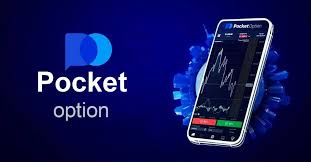
Pocket Option Fees: Understanding the Costs of Trading
Trading platforms often come with their own sets of fees and charges. For traders using Pocket Option, understanding these Pocket Option Fees fees Pocket Option is crucial for planning and executing trades effectively. This article dives deep into the various fees associated with Pocket Option, offering insights to optimize your trading experience.
1. Introduction to Pocket Option
Pocket Option is a popular online trading platform that allows users to trade a variety of financial instruments, including forex, commodities, and cryptocurrencies. Launched in 2017, it quickly gained traction due to its user-friendly interface and extensive features. As with any trading platform, potential users should familiarize themselves with the associated fees to make informed trading decisions.
2. Types of Fees on Pocket Option
Understanding the types of fees on any trading platform is essential for any trader. Below are the key fees that you may encounter on Pocket Option:
2.1. Spread Fees
The spread is the difference between the buying and selling prices of an asset. In Pocket Option, traders often need to pay a spread fee, which can vary depending on the asset being traded and market conditions. A narrower spread generally indicates better trading conditions.
2.2. Withdrawal Fees
When it comes to withdrawing funds from your Pocket Option account, certain fees might apply. These fees can differ based on the withdrawal method you choose (e.g., credit card, e-wallets). Understanding these fees is essential as they can eat into your profits.

2.3. Deposit Fees
Depending on your deposit method, Pocket Option may charge a fee for funding your trading account. Some methods may be free, while others might carry costs. Traders should check the latest terms and conditions for the most accurate information.
2.4. Inactivity Fees
Pocket Option charges an inactivity fee if there are no trades or account activity over a certain period. It’s crucial for traders who plan to hold positions for extended periods to be aware of this fee, as it can accumulate and affect balance if not managed properly.
3. How to Minimize Fees
While fees are an inevitable part of trading, there are several strategies you can use to minimize them:
3.1. Choose the Right Deposit and Withdrawal Methods
Select methods that incur minimal fees. E-wallets might offer better incentives compared to traditional bank transfers.
3.2. Stay Active
To avoid inactivity fees, ensure you engage in trades regularly. If you plan to take a break from trading, consider planning to avoid getting charged.
3.3. Compare Spreads

Before executing trades, be sure to evaluate the spread on different assets. Making informed decisions on which assets to trade can significantly affect your overall costs.
4. Understanding the Impact of Fees on Trading Strategy
Fees can significantly impact your trading strategy. It’s essential to factor in all associated costs when planning your trades. For instance, higher fees may necessitate more frequent, smaller trades instead of fewer large trades, which can help mitigate losses incurred through costs.
5. Frequently Asked Questions (FAQ)
5.1. Are Pocket Option fees competitive with other platforms?
Generally, Pocket Option’s fees are competitive when compared to other trading platforms, but this can vary depending on the assets you are trading and market conditions. Traders should conduct thorough market analysis.
5.2. Is there a minimum withdrawal amount on Pocket Option?
Yes, Pocket Option has a minimum withdrawal limit, which can vary based on the withdrawal method used. Always check before initiating a withdrawal.
5.3. Can I avoid fees on Pocket Option entirely?
While you can’t entirely eliminate fees, careful selection of trading strategies and withdrawal methods can help significantly reduce the overall costs.
6. Conclusion
Understanding and managing the fees on Pocket Option can enhance your trading experience, potentially leading to better profit margins and improved strategies. As an active trader, it’s essential to stay informed and adjust your approach to account for any fees. By doing so, you can maximize your trading potential and thrive in the financial markets.
